normal end tidal co2 uk
The waveform is called capnograph and shows how much CO 2 is present at each phase of the respiratory cycle. Evidence-based information on importance of end tidal co2 monitoring from hundreds of trustworthy sources for health and social care.
Emdocs Net Emergency Medicine Educationcapnography In The Ed Emdocs Net Emergency Medicine Education
Has historically been limited to operating room measurement but is becoming available in Emergency Department in 2019.
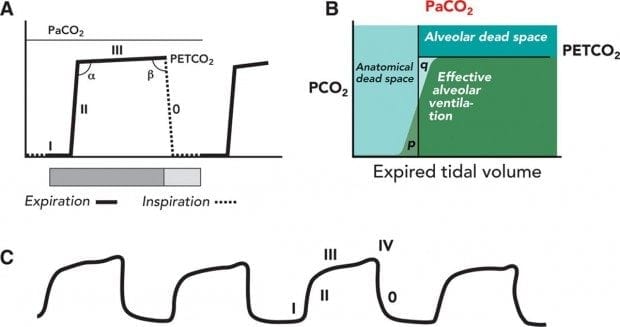
. The authors aimed to define the optimum etco2 to conclusively exclude a pulmonary embolic event. You can see that the plateau is not there and the return to the baseline happens rather quickly. Metabolically active tissue to produce CO2.
The number is called capnometry which is the partial pressure of CO 2 detected at the end of exhalation ranging between 35 - 45 mm Hg or 40 57 kPa. Since problems with lungs are not common and gas exchange between alveoli and the blood is swift and effective alveolar CO 2 reflects arterial CO 2. If there is a leak in the system however it will look like the diagram here.
Because of the leak in the circuit the carbon dioxide is escaping rather than being measured. Capnography is the measurement and numerical display of end-tidal carbon dioxide also known as EtCO 2. In fact its commonly called the ventilation vital sign.
The Basic Skills you Need to Succeed. This recommendation assumes a 05 kPa. Normal end-tidal CO2 values for most mammals and birds is a level of 35- 40mmHg or 45-50.
Understanding a VPS for Beginners. Baseline can be elevated with a prolongation of phase II increase in the slope of phase III and prolongation of descending limb. Current guidance recommends an end-tidal carbon dioxide ETCO2 of 4045 kPa 300338 mm Hg to achieve a low-normal arterial partial pressure of CO2 PaCO2 and reduce secondary brain injury.
End tidal CO 2 monitoring is represented as a number and a graph on a monitor. Normally the end tidal appears as a plateau on the capnograph. How YouTube Has Made Understanding Tech More Accessible.
Or partial pressure of carbon dioxide measured somewhere near the mouth at the end of a normal exhalation hence end tidal end of tidal volume breath To get a measurement the following systems need to be functioning. Statement on End-Tidal CO2 Monitoring No trace wrong place. When a person is breathing in it goes back down.
An end-tidal capnography waveform measures and displays the peak amount of CO2 at the end of exhalation. Circulation cardiac output to carry that CO2 to the lungs in blood. 8 Gadgets that will Help you Relax and Unwind.
The difference between nend-tidal and arterial CO 2 is increased if there is mismatch of ventilation and perfusion within the lung as occurs in lung disease. Hence for normal breathing. Monitoring of end-tidal carbon dioxide EtCO2 is a noninvasive method that measures the partial pressure or maximal concentration of carbon dioxide CO2 at the end of exhaled breath which is expressed as a percentage of CO2.
Reading the Waves When it comes to capnography everyone knows the normal adult respiratory. End-tidal carbon dioxide ETco 2 monitoring provides valuable information about CO 2 production and clearance ventilation. In severe cases of respiratory distress increased effort to breathe does not effectively eliminate CO2.
EtCO 2 is the maximum expired carbon dioxide concentration during a respiratory cycle. Capnograms in infants and children can have the following format under normal circumstances due to faster respiratory rates smaller tidal volumes and relatively longer response time of capnographs dispersion of gases in side-stream capnographs. End tidal co 2 monitoring is represented as a number and a graph on a monitor.
On page 49 of the European Paediatric Advanced Life Support manual EPALS 4th edition there is a statement regarding end-tidal carbon dioxide ETCO 2 traces during CPR which states The absence of exhaled CO 2 during CPR does not guarantee tube misplacement. In normal conditions CO2 is 5 to 6 which is equivalent to 35-45 mmHg. It is the result of transport of CO2 and ventilation its amplitude being a direct result of the level of cardiac output.
The technique has been End-tidal carbon dioxide monitoring in neonates Carbon dioxide monitoring is vital in the management of ventilated newborn babies. Phases of the waveform. Video Game Development.
Measured by Face Mask or nasal detector that attaches to a monitor module measures EtCO2 and EtO2 III. In normal lungs the end-tidal CO 2 tension is 0508 kPa less than the arterial CO 2 tension and is a useful non-invasive estimate of arterial CO 2. Capnography can be used to measure end-tidal CO 2.
The height of the capnography waveform accompanies this number on the monitor as well as the respiratory rate. End-tidal carbon dioxide monitoring or capnography End-tidal carbon dioxide EtCO 2 monitoring is an attractive method as it is non-invasive portable and relatively inexpensive. The waveform is a rectangular shape that has 3 phases.
Values in reptiles will be approximately similar particularly if the animal is at room temperature. Objectives In the UK 20 of patients with severe traumatic brain injury TBI receive prehospital emergency anaesthesia PHEA. In conditions of normal breathing 6 Lmin 12 breathsmin 500 ml for tidal volume etCO 2 is very close to alveolar CO2.
Also called capnometry or capnography this noninvasive technique provides a breath-by-breath analysis and a continuous recording of ventilatory status. Normal end tidal co2 uk. The amount of CO2 at the end of exhalation or end-tidal CO2 ETCO2 is normally 35-45 mm HG.
The normal Range of Co2 is 35-45mmHg and this is measured at the end-tidal point of the alveolar plateauas described below. The graphical representation of the concentration or partial pressure of expired carbon dioxide during a respiratory cycle is shown in a waveform format and is known as a capnogram. Since problems with lungs are not common and gas exchange between alveoli and the blood is swift.
According to the book by Hockenberry and Wilson 2015 p 1140 normal values of ETCO2 are 30-43 mmHg which is slightly lower than arterial PaCO2 35-45mmHg. Measured concentration of oxygen in expired breath.

Sar Helicopter Paramedic Practice Etco2 Measuring To Assist With Cpr Attempts Journal Of Paramedic Practice

The Model The Simulation Runs In A Loop Calculating Instantaneous Download Scientific Diagram

Different Capnography Traces A Sudden Drop In E 0 Co2 B Download Scientific Diagram

Easy Cap End Tidal Colorimetric Co2 Detector Reflex Medical

Relationship Between Etco2 End Tidal Carbon Dioxide And Paco 2 Download Scientific Diagram
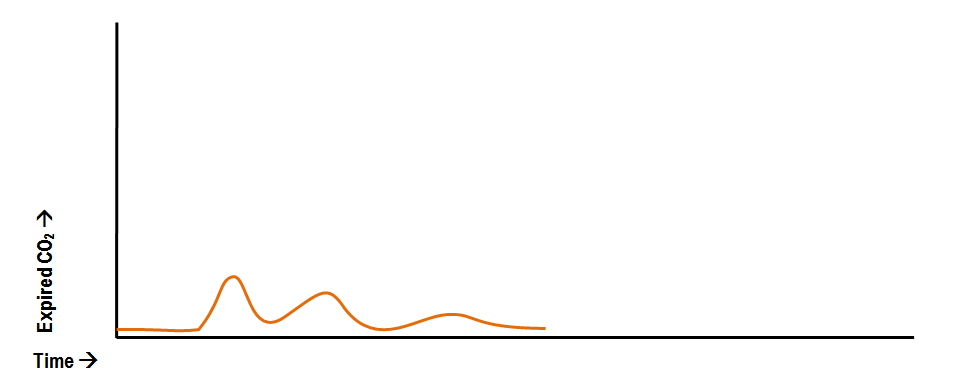
Abnormal Capnography Waveforms And Their Interpretation Deranged Physiology

Potential Applications Of Capnography In The Prehospital Setting Journal Of Paramedic Practice

The Morphology Of The Normal Capnogram Etco2 End Tidal Carbon Dioxide Icu Nursing Paramedic School Human Anatomy And Physiology

3 Waveform Capnography Showing Changes In The End Tidal Carbon Dioxide Download Scientific Diagram

References In Cerebral Oximetry Versus End Tidal Co2 In Predicting Rosc After Cardiac Arrest The American Journal Of Emergency Medicine
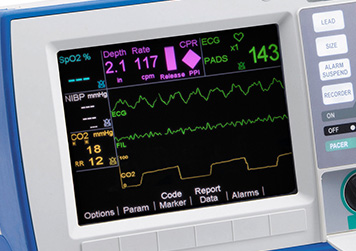
End Tidal Co2 Etco2 Capnography For R Series Zoll Medical
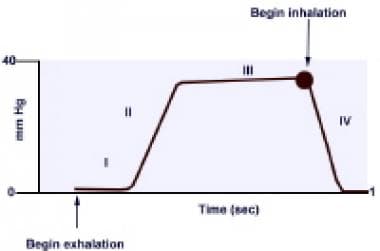
End Tidal Capnography Background Indications Technical Considerations
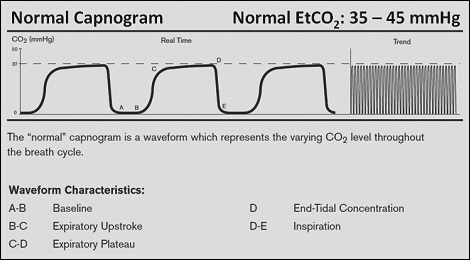
Capnogram R Series Defibrillator Zoll Medical Uk

End Tidal Carbon Dioxide Concentration E Co2 Mm Hg For The Download Scientific Diagram

Capnography Waveform Interpretation Litfl Ccc Equipment

3 Waveform Capnography Showing Changes In The End Tidal Carbon Dioxide Download Scientific Diagram

Example End Tidal Gas Recordings From An Individual Subject Top Download Scientific Diagram
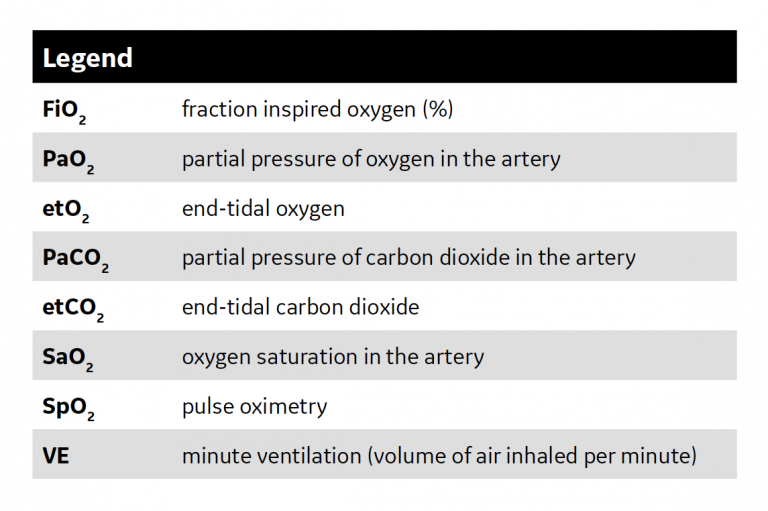
End Tidal Oxygen Measurement White Paper Clinical View

Pdf Applications Of End Tidal Carbon Dioxide Etco2 Monitoring In Emergency Department A Narrative Review Semantic Scholar